Interview: Andrew Pierre Hart Discovers the Rhythms of Painting
By Keshav AnandAndrew Pierre Hart’s practice explores the symbiotic relationship between sound and painting, incorporating aspects of sculpture, language, performance and film. His abstract compositions draw on sources as diverse as the murals of the Gurunsi people in Burkina Faso, Yoruba divination codes, graphic musical scores, and digital coding.
It’s been a busy month for Hart, who recently unveiled a new commission for Whitechapel Gallery, comprising a sprawling mural, six new oil paintings, a sculpture, and a sound composition and film recorded in the streets around the gallery. The artist is also part of Lisson Gallery’s new show, Accordion Fields, a major group exhibition of contemporary painting by artists who trained in London, and whose visual languages and creative identities have been shaped by the city.
To learn more about Hart’s practice and his latest projects, Keshav Anand spoke with the artist.
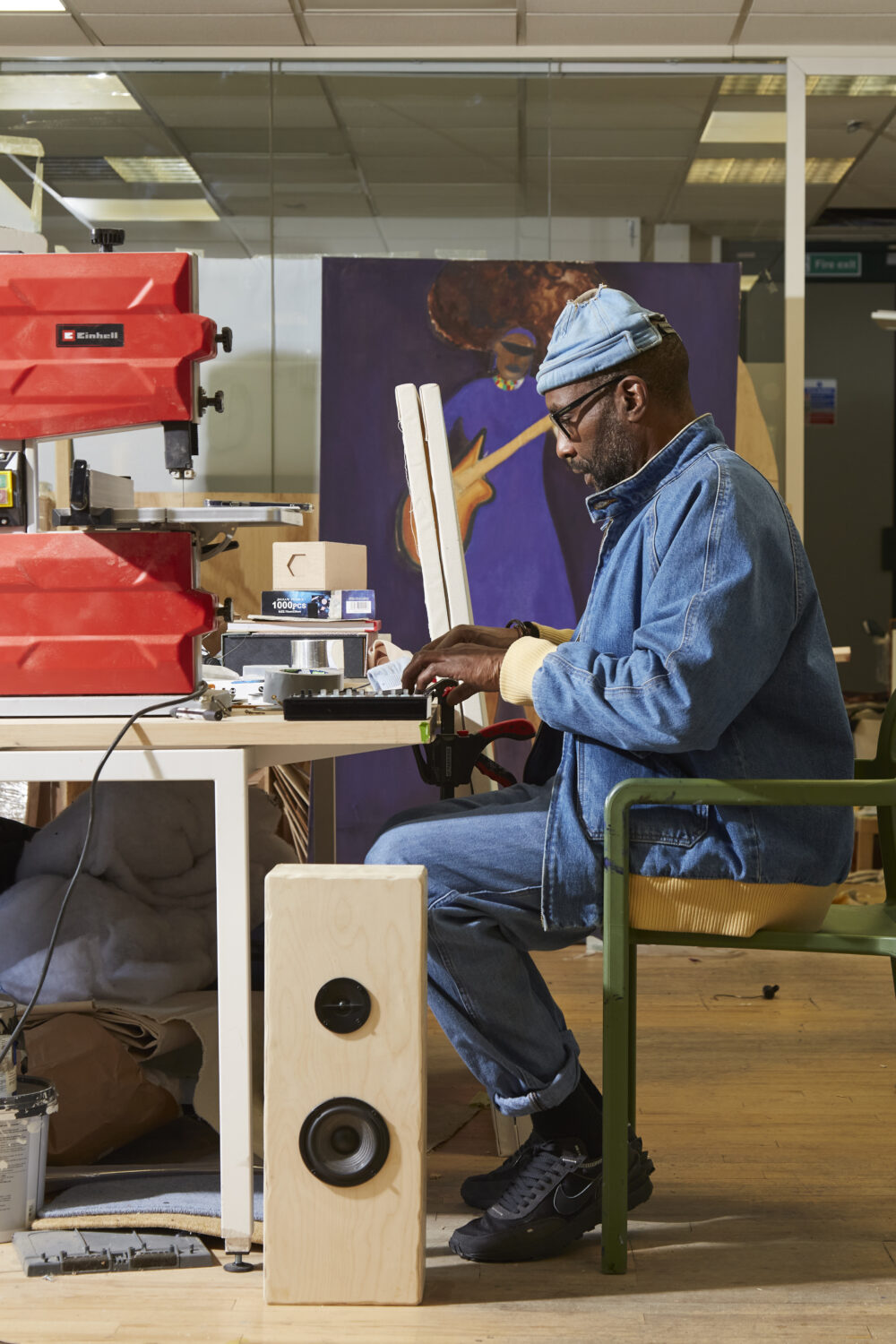
Keshav Anand: Could you expand on your interest in the relationship between sound and painting?
Andrew Pierre Hart: A wider and open space is offered when I explore what feels quite natural to be in relationship with each other — the construction and building of an art “practice” is part of the artist’s struggle to find the lifelong exploration that drives the artist. The rhythms of painting and sound are where I found this deep dive into the proposal, like a durational sound performance. There are so many areas that I can explore within this proposal that continually iterates so it becomes infinite.
At the moment I’m interested in space and how we utilise it in the performance of showing art and experiencing art — how we as viewers experience looking, how we can be immersed, how the experience of sound with painting can be enhanced; does sound offer a deeper connection to visual matter? I am asking questions as well as creating the environments to understand these phenomena.
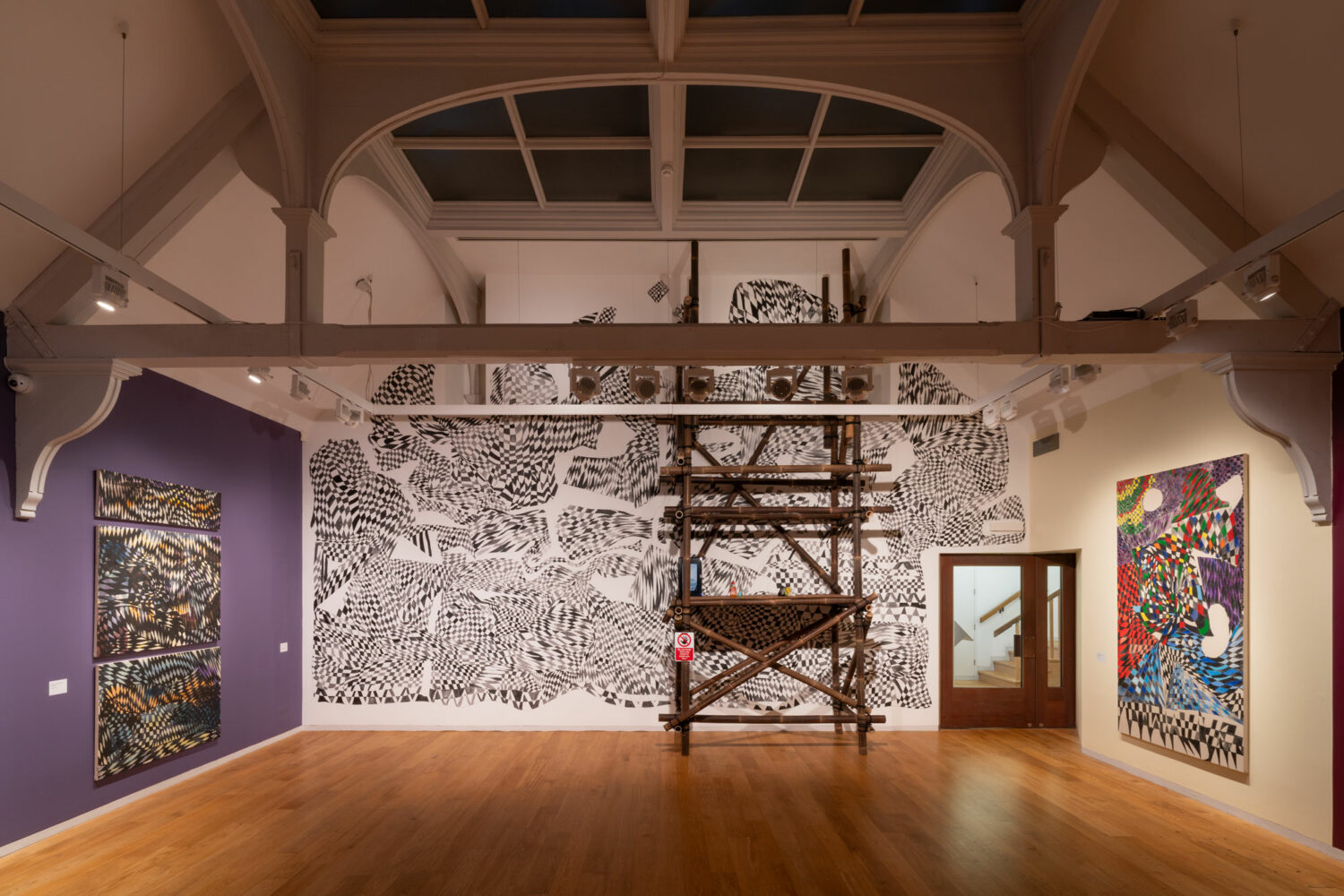
KA: I understand you previously worked as a DJ and musician, running a record label — how did this evolve into the multidisciplinary art practice you have today?
APH: As the CD came in and disrupted the vinyl market, I decided to go back to art. I dropped out of A-level art — the shift from the free exploration and play with materials to A-level drawing of DM boots in various forms pushed me away. Yet art was always with me — as soon as the shift to CDs happened, the industry was in turmoil and vinyl production became unsustainable. The choice to continue exploring art through painting was made. I purchased lots of inexpensive art materials and started to play, making assemblages, paintings, interventions and large-scale vinyl text works in random public spaces, alongside reading about art daily at the Swiss Cottage Library.
Having moved from the art of sound to the art of making, my subject was naturally going to relate to sound. I thought through these ideas; my assemblages were like turntables and linking circuits — they looked very musical and technical at the same time. As I am very much self-taught, I am free in my explorations of art, material and ideas. All of this junk made up my portfolio for my application to art school — I was offered a place at Chelsea after I literally spilt my portfolio onto the interview table.
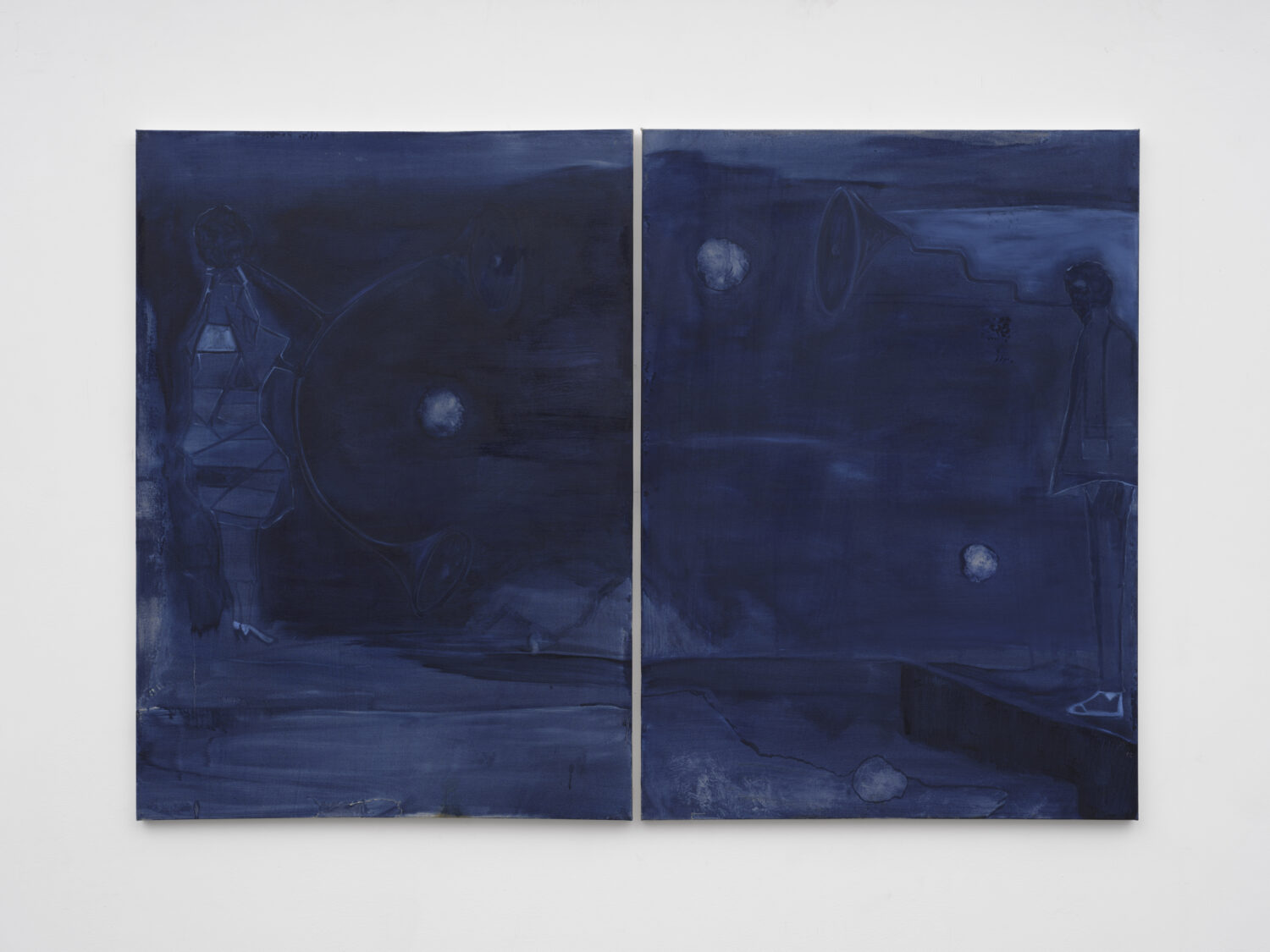
KA: Can you tell us about the work you are showing at the current Lisson Gallery exhibition, Accordion Fields?
APH: I am showing a diptych titled Study of Spatial Rhythm Structure and my newest work, He says activation @ 8.1 surround – Bio Musicology. It is part of a series of works that look at the theory of biomusicology, the phenomena of sound and nature at very interesting junctures. For example, a bird’s flapping wings can be seen not only as a visual representation of rhythm but also as an auditory rhythm in themselves, like a metronome. The theories can be as intricate and explorative as you want to situate and contextualise. The painting offers the possibilities of imagining the sound in the landscape.
KA: Exploring diasporic narratives, your paintings often blur reality and myth — I’m curious to learn more about the thinking behind the subjects you represent?
APH: The blurring of reality and myth is a universal idea that exists in all cultures. By utilising this second nature information sharing device, I am able to use the imagination of myself and the viewer to think about subjects, ideas and theories relating to sound and theory that can open up space for more in my work. Ongoing narratives and the interplay between dialogues and languages serve as a way to delve further into ideas that are difficult to communicate.
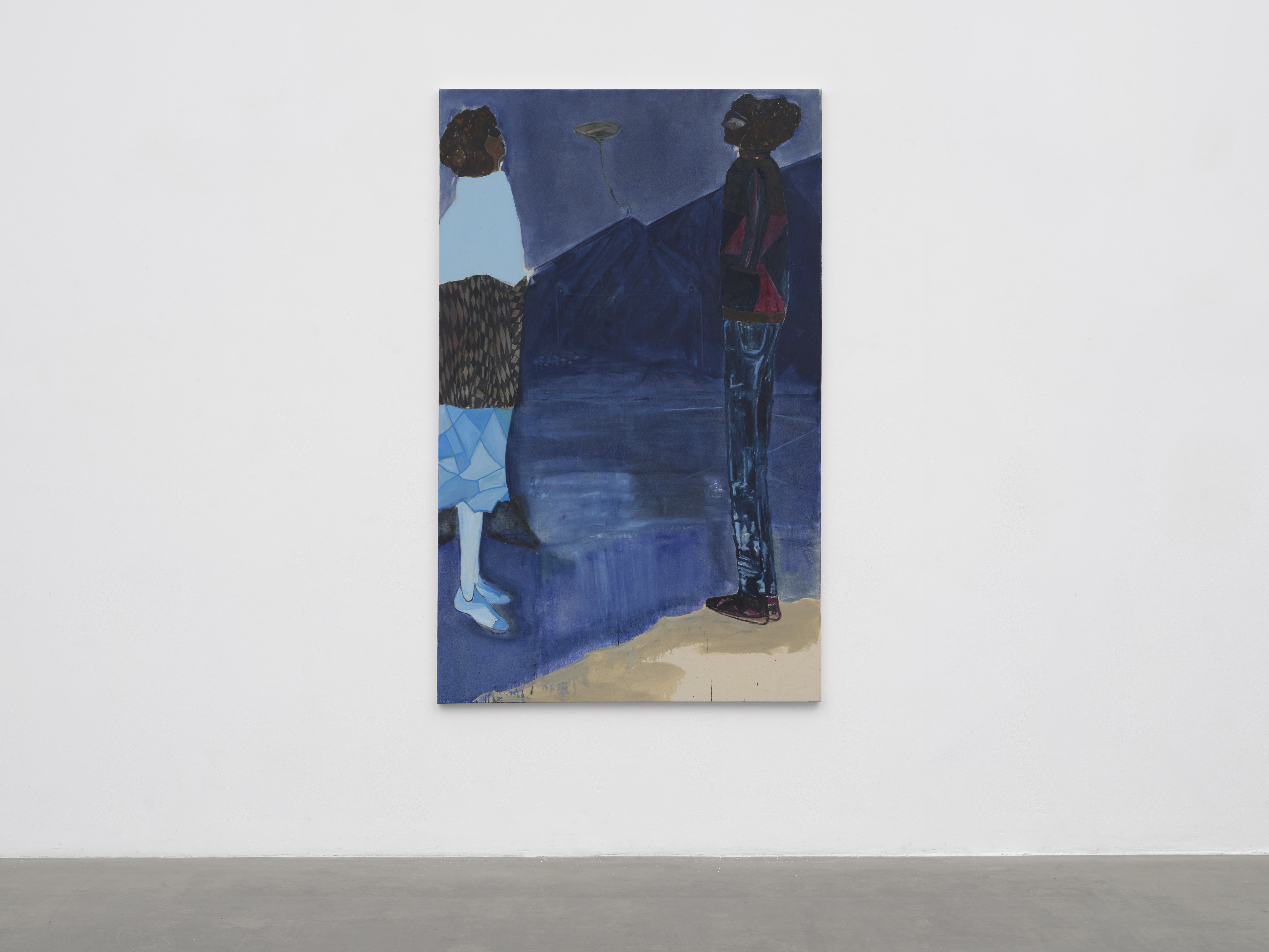
You can tell truths through storytelling — African and Caribbean proverbs and mythical stories are full, in the same way that Chinese proverbs are full, of morals, moral guidance — I’m not sure if I’m trying to morally guide anyone but I am playing with the form to activate a particular way of thinking around our own existence and engagement in the world. A world that is both real and imagined, both mine and ours.
KA: How have you approached your new commission for Whitechapel Gallery, particularly in regards to the works’ site specificity?
APH: Whitechapel is the site for research, exploration, sound and the subject of my work. Being in Whitechapel was very important in order to feel it, experience it, talk with and to it, engage with locals, the night, the day, the light, the dark, the noise, the peace. I was immersed in Whitechapel in many ways — and the catalyst for the show was a conversation with a local, Rishad.
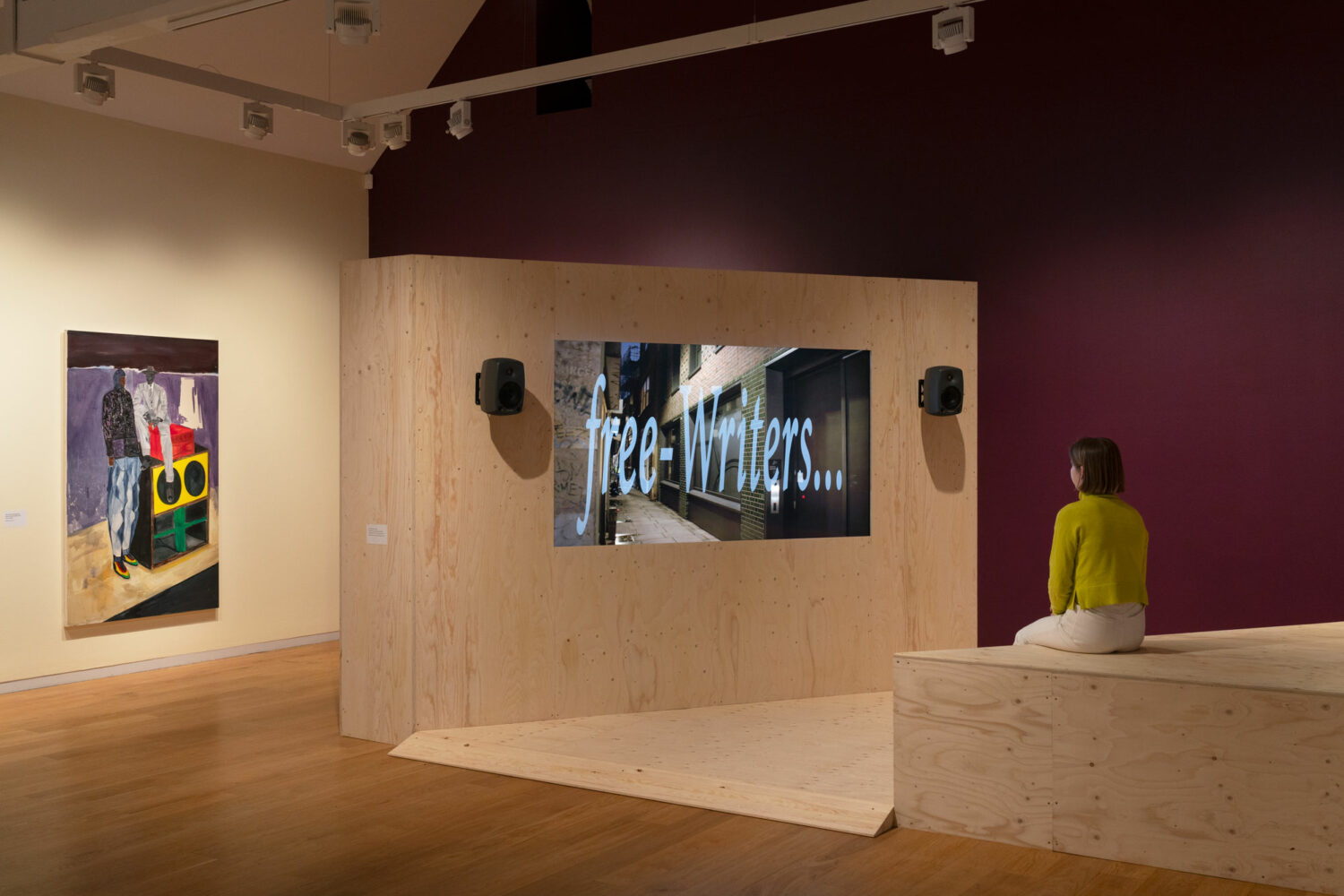
This was the only way to feel the internal clock of Whitechapel, its meta-rhythms and convoluted histories. I also read lots of information and this analysis of all of the different sources of information felt much more human — hence the idea of Bio-Data Flows — a more human and holistic method of capturing and sharing information, just like the cerebral communications of Shabaka Hutchings.
KA: What are you currently listening to?
APH: Anything Shabaka Hutchings, Moor Mother, Irreversible Entanglements — particularly live.
Andrew Pierre Hart: Bio-Data Flows and Other Rhythms – A Local Story, Whitechapel Gallery, London, 15 February – 7 July 2024
Accordion Fields, Lisson Gallery, London, 23 February – 4 May 2024
Constellations Part 1: Figures On Earth & Beyond, Gallery 1957, London, 14 March – 23 May 2024
Feature image: Portrait of Andrew Pierre Hart. Courtesy of the artist and Asia Art Center